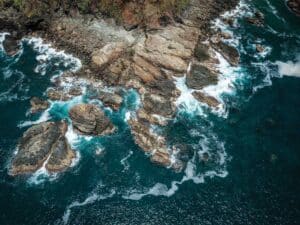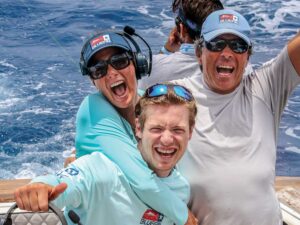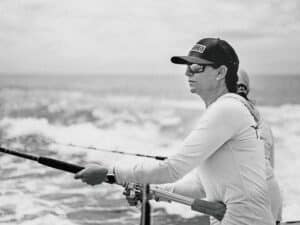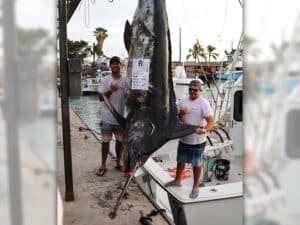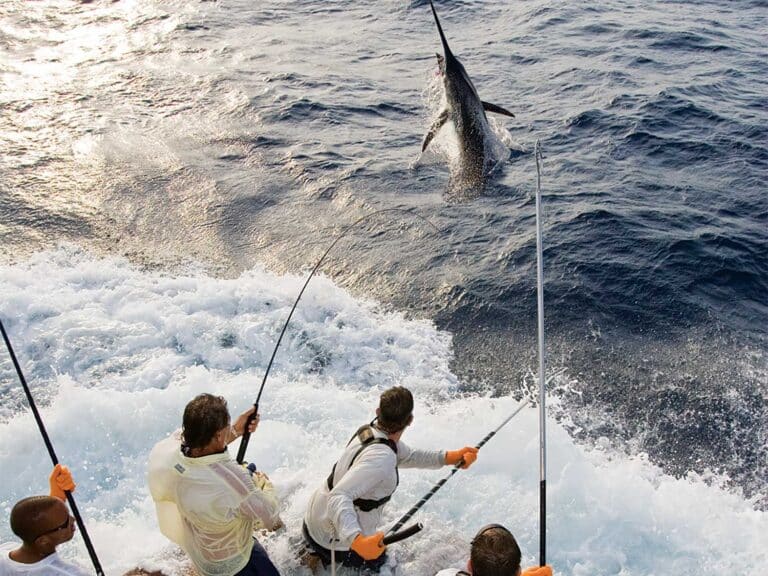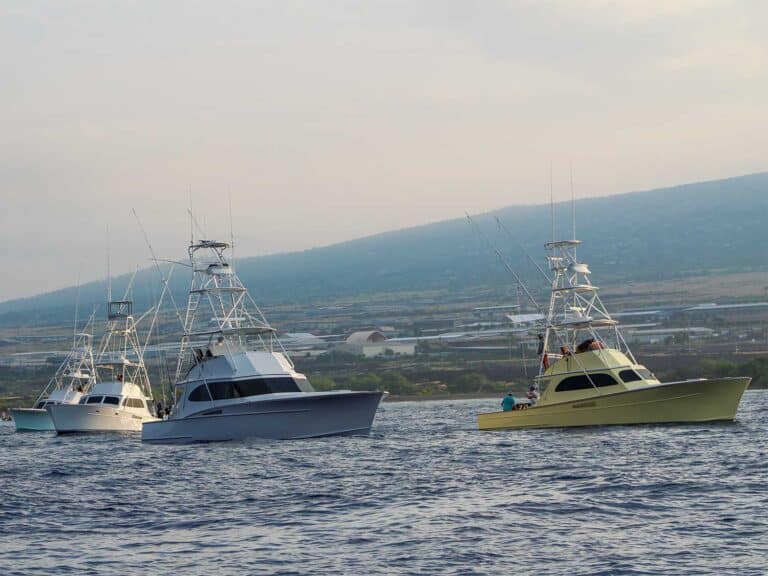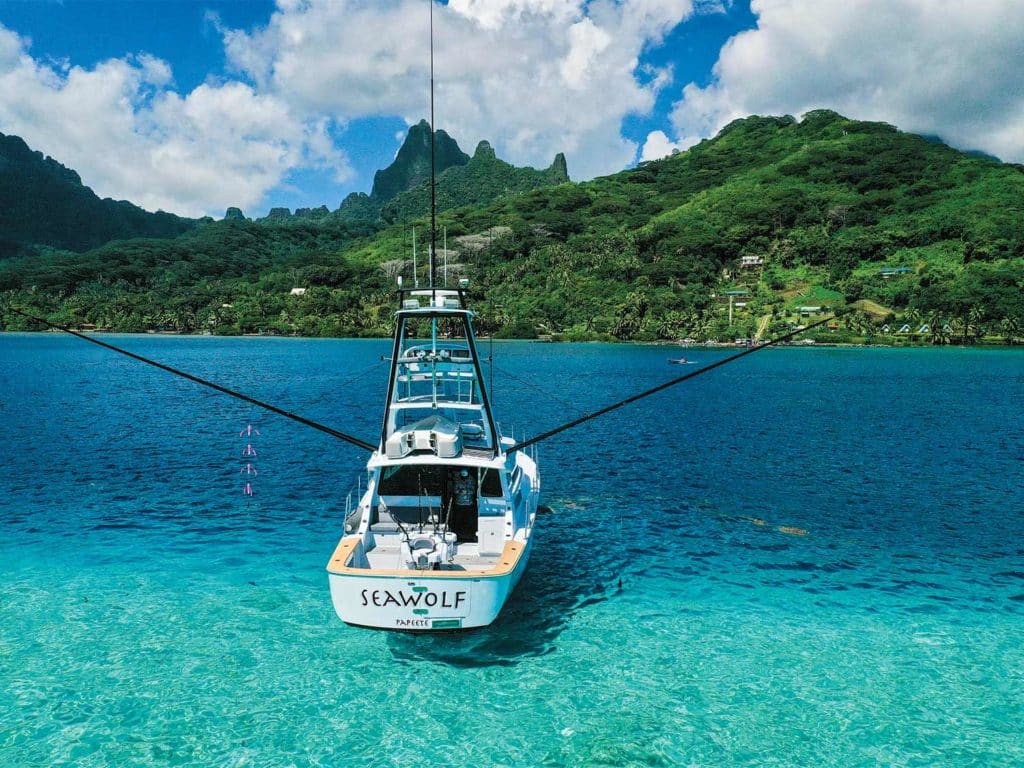
Special delivery: Sign up for the free Marlin email newsletter. Subscribe to Marlin magazine and get a year of highly collectible, keepsake editions – plus access to the digital edition and archives.
The fundamentals of fishing make us all explorers because the quest for that next bite can often take us far and wide. Even when we just go back to the same place we were yesterday, we can find something we have never seen before. Some of us, though, seem genetically predisposed to go see what writer Charles Gaines entitled his superb fishing book—The Next Valley Over—even if that valley is some far-flung spot on the globe.
Back in high school, winter often cloaked my Texas home in a cold gray for days, but books transported me to the South Pacific, where it was always hot with sunny blue skies. In Wanderer, Wake of the Red Witch and The Navigator, the Argonauts had it pretty good. Herman Melville prefaced Typee with, “Sailors are the only class of men nowadays who see anything like stirring adventure”—and that was 175 years ago.
If you think this stuff sounds as exciting as I did when I was young, you might want to read between the lines, because following in the footsteps of captains like Hayden and Ralls, or even writers like Gaines, can land you in hot water. Buried deep in elegant prose and romantic scenes are often some hard rules one must learn out in the far-flung places. Rule No. 1: Sometimes, the pioneers get the arrows.
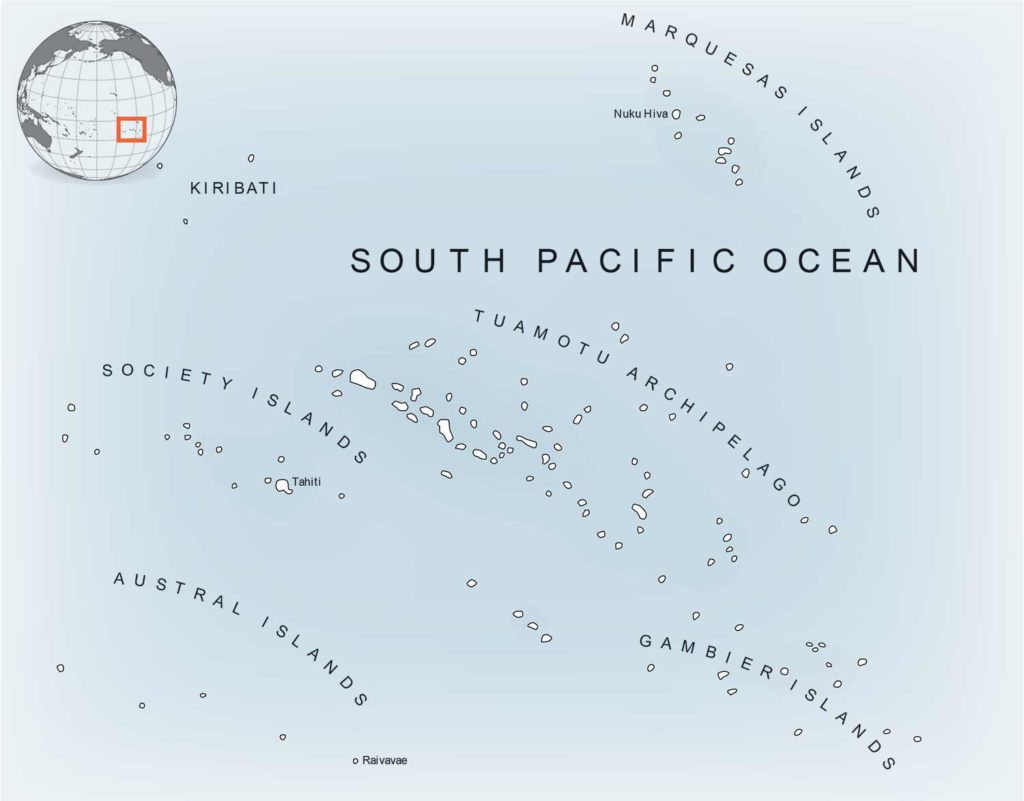
Imparadised
Only a few years after school, I actually found myself on Bora Bora, “imparadised”—as Gaines once described a happy hog on a Tahitian island. No one seemed to care about an imaginary outside world. How would you even know it existed? There were no phones, and thank God, no internet. Oh, and yes: The South Sea maidens were indeed as exotic and as beautiful as the books said they would be. Of course, I went back. I still do.
When I returned the following year, I started fishing on any boat that would have me. I fished from canoes, local poti marara skiffs, bonito boats and Richard Postma’s sailing catamaran, which, by the way, kicked butt in the local tournaments. Boats and fuel can be real challenges in the South Pacific. Around 1983, Leo Wooten showed up on Bora Bora. Wooten tried to drive his 28-foot commercial boat from Hawaii to Bora, missing by only about 600 miles. Considering that the Pacific is 12,000 miles across, Wooten said that missing by only 600 miles was pretty damn good.
Watch: A belly-strip teaser is a great way to raise marlin and sailfish.
In the early 1980s, we fished a Bora Bora Fishing Club tournament and caught a marlin that would measure out to be around 1,100 pounds. We arrived too late to qualify, missing out on the winnings. Just the tail of our fish was too big for the scale, but before they chopped it up any further, Wooten stopped them and had the marlin pieces loaded back onto the boat. He invited a French-speaking friend to jump on board for a beer, then nonchalantly untied the boat and idled over to a French navy ship at anchor in the harbor, careful not to attract attention. His friend did all the talking in return for beer, and helped sell the fish to the navy—head, tail, guts and all. In the South Pacific, you figure out how to get by.
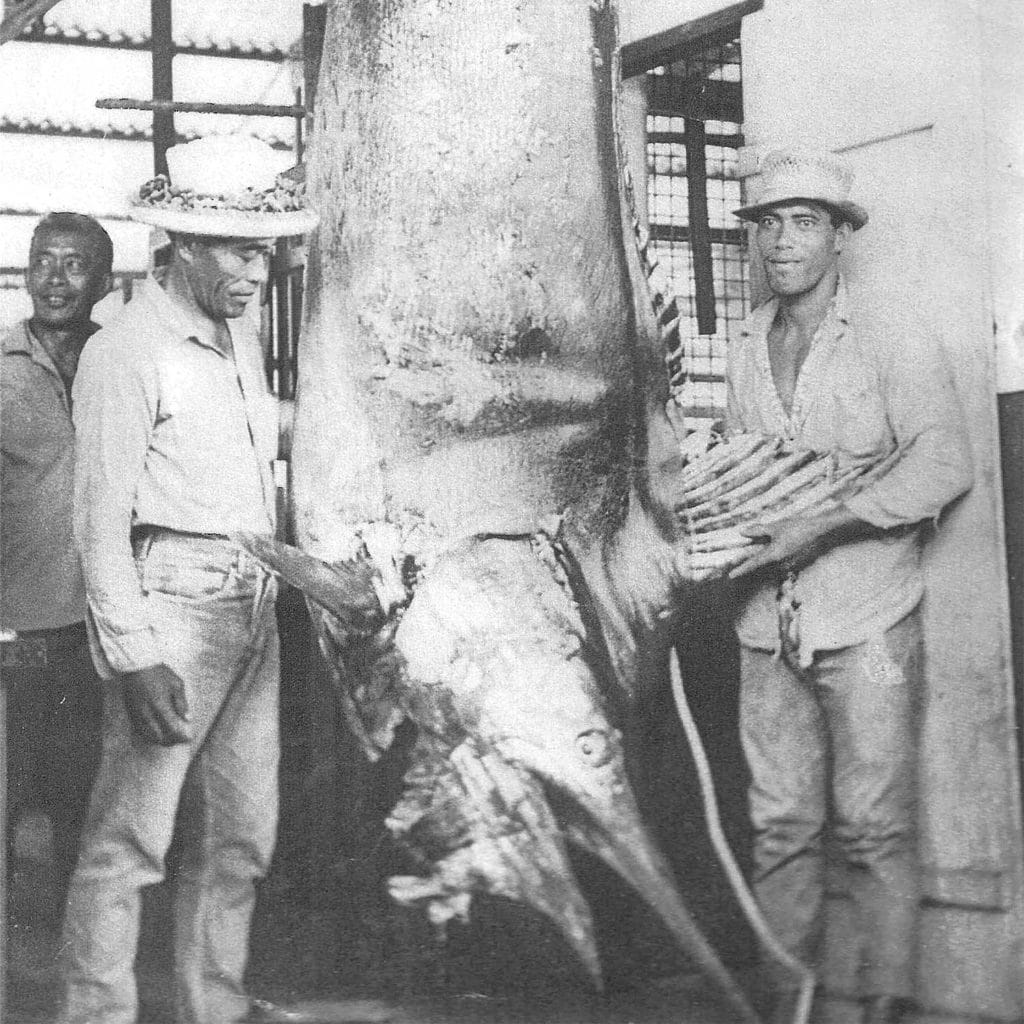
Tahiti’s Big Mamas
Tahiti is fabled by romantics for the aforementioned South Seas maidens and by fishermen for giant marlin. Called simply “Big Mamas” by the locals, most of these behemoths are caught from poti marara skiffs while fishing for yellowfin tuna. However, because of the language barrier and other obstacles, the stories and weights of these fish can be vague, at best. The largest officially weighed Big Mama came in at 709 kilograms. That comes out to 1,563 pounds, and was caught from a skiff.
There are photos of one Big Mama that is believed to weigh 1,400 kilos—3,086 pounds! No one can find an eyewitness to the weigh-in and the photo does show a giant fish, but 3,000 pounds is questionable. Nevertheless, this fish is central to local lore, and if you do question it, you could find yourself in a fight. There are also more places to land a fish than there are people with good scales, which is why many are never weighed, just hung for photos. Many of the Big Mama marlin are weighed only when sold by the kilo.
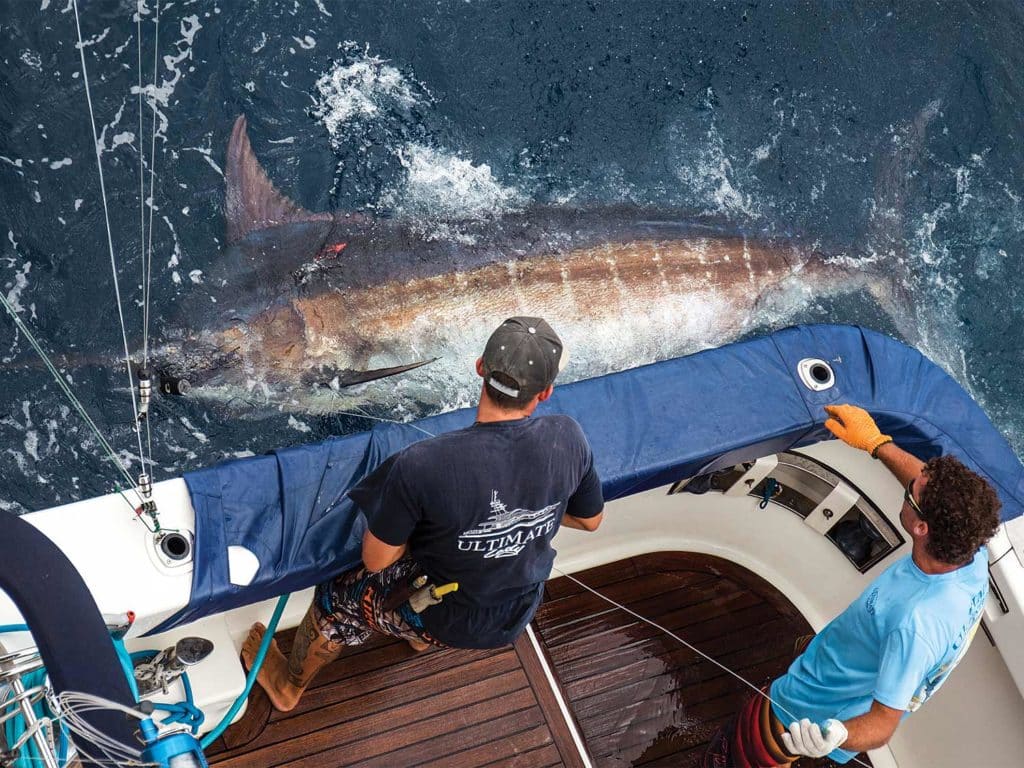
The Dunaway Connection
Tahitian granders are caught randomly, so that got me thinking, I wonder if there is a place down there where the big blues congregate like the blacks do on the Great Barrier Reef?
I don’t recall how I even got an audience with Jerry Dunaway, but he agreed to send me out scouting for The Madam and The Hooker to look for new places for them to fish after the heavy-tackle season ended in Australia. I figured the best way to do that was to see where the commercial guys caught them. So I went to Honiara in the Solomon Islands to do some research at the Forum Fisheries Agency. The FFA is where 17 Pacific Island countries pool their catch data in order to better negotiate with foreign fleets on fishery access agreements.
The fishery guys at FFA were suspicious at first, saying that a marlin fisherman had never graced their doors before. When I showed them a photo of The Madam with The Hooker piggybacked, they objected. “You are just trying to sneak in another purse seiner,” they said. When I told them no, that we were actually just going to catch fish and let them go unless they were a world record, I thought they would throw me out of the country. A British fishery manager intervened, and they let me stay. One day, the director had a bad day negotiating with some Japanese and walked up, hoping to find a more pleasant conversation. He asked what I was looking for. Once I told him, he had his computer man pump out a comprehensive database of marlin catches across the Pacific, from the 1950s through that year. This was a first. No one had ever asked about billfish before. In the end, the Dunaways did not stop anywhere except Tahiti. Although the FFA longline data indicated the Tuamotu atolls to be a hotspot, our fishing was a bit slow in the atolls. Back at Bora, we caught a ladies’ world record on 6-pound-test line, but it is no longer standing.
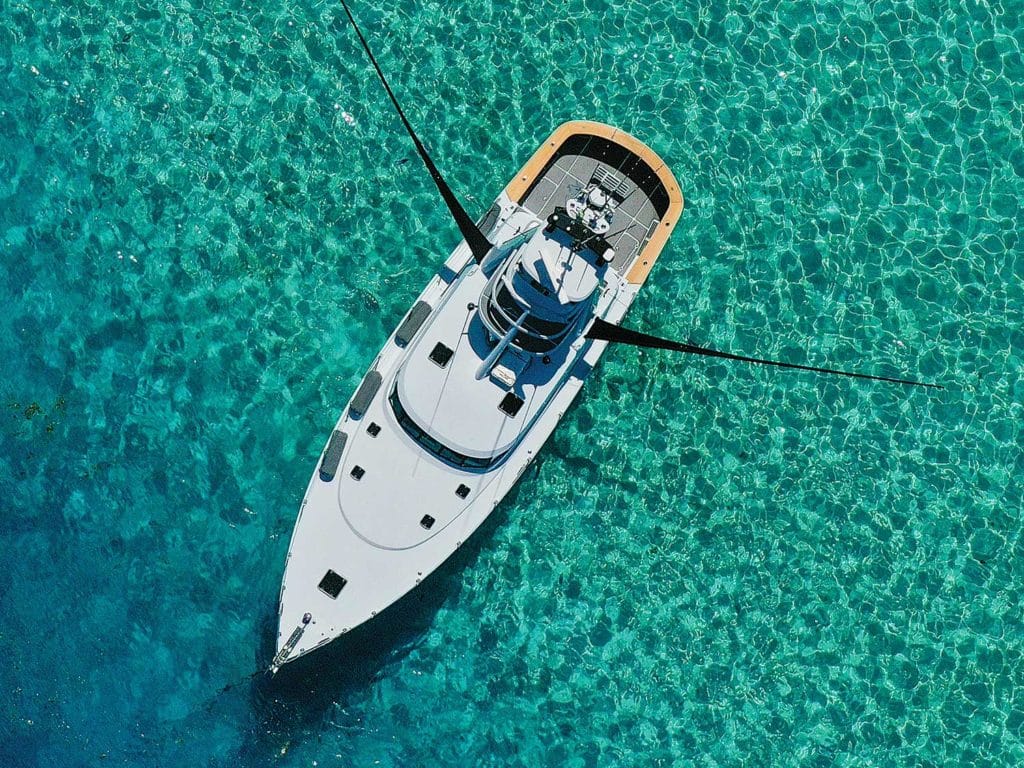
Armed with FFA data, I continued to hunt around for concentrations of blue marlin all over the Pacific. When I was offered a gig with the Food and Agriculture Organization of the United Nations back in the Solomons, I shifted focus, at least for the moment, away from Tahiti. The Solomon navy promised me their 32-foot Black Watch, but only after they removed the machine guns from bow and stern and put the chair and riggers back on. Wary of Rule No. 1, I asked them to leave the gun on the bow, but they said no. I left to check out a small fishing lodge, and while I was away, they dispatched the boat to a rebel uprising up on Bougainville Island. Once again, I had to make do with any boat I could find. We fished from a canoe, an aluminum center-console called a tinnie, and finally, an old Japanese pole-and-line boat. We did not have a problem with bad fuel though—it all got stolen. Rule No. 2: Exploring is not always romantic.
Finding Fish Wherever You Are
We campaigned the Japanese jack-pole boat through 100 miles of squalls toward a seamount on the Pacific side of Santa Isabel. My crewmates spoke no English, but they were kind and invited me to dine with them. They ate with their fingers, which is common, but they used the same deck hatch that they trod upon as their communal dinner plate. Luckily, they did not seem offended when I declined.
The handheld GPS I had was solid, and once at the seamount, we caught a handful of nice marlin, with 130-pound-class reels lashed to the aft bollards. Having proved the potential, I caught the first plane home.
Finally succeeding on that distant Solomon bank encouraged me to figure out a way to fish a similar spot in the Tuamotu atolls. Gaines wrote of this as “madness over one far-flung spot on the globe,” but of course, he didn’t tell me that. He wrote that line in Esquire Sportsman magazine, after we survived a rather serious encounter with Rule Nos. 1 and 2.
We were fishing on a 47-foot Buddy Davis on that trip. We caught six blues in 12 hours of trolling; the largest one we called 700-plus pounds. Right when we got to my bank, an injector seized, ending that trip. The culprit? Rule Nos. 1 and 2. We had arranged for new drums of clean fuel, but before we arrived, the interisland freighter had dropped rusty drums on the dock and moved on. We filtered the diesel through everything we had, even our socks and underwear, but something got through. Later, the fuel company claimed that the crane operator simply grabbed the wrong drums. Which leads us to Rule No. 3: Manage your own fuel as closely as you can.
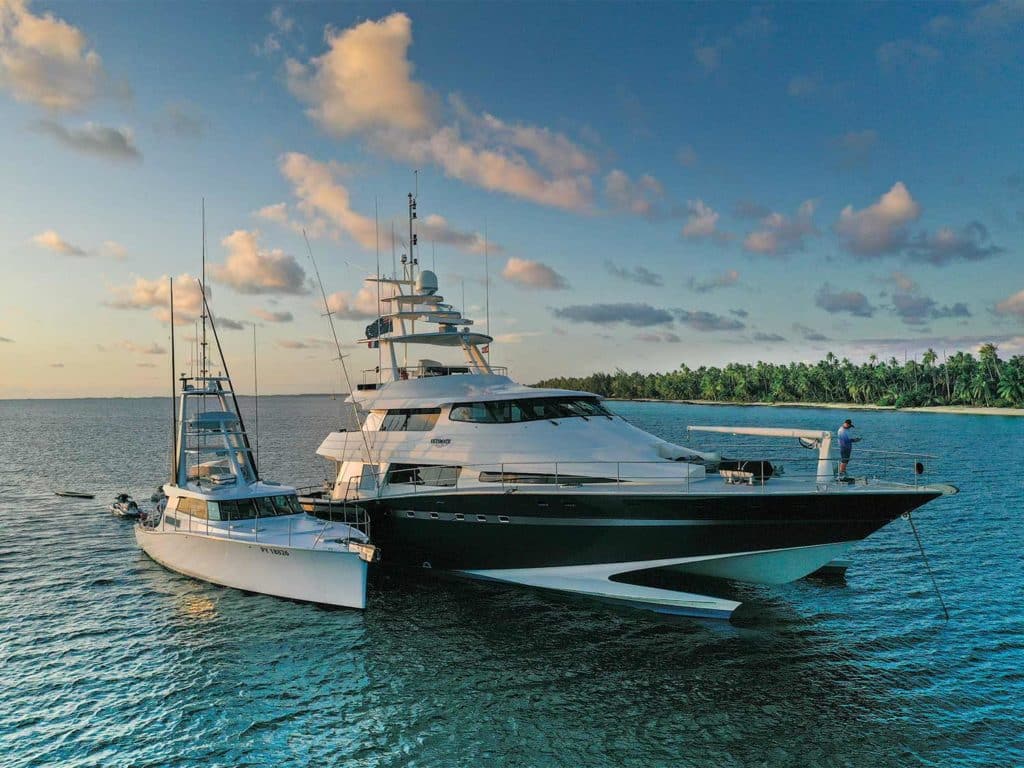
The Tahitian Explorers
Alban Ellacott was president of the Haura (marlin) Club of Tahiti for many years, and he too loved to explore. Ellacott would arrange for an interisland freighter to haul his small sport-fishing boat along. He and Tihoti Poroi fished many atolls trying to figure out spawning grounds and migration patterns. Ellacott once said that marlin have a double migration, passing Tahiti in spring and again in fall. Through different means and methods, Ellacott, myself, and in recent years, Capt. Tom Francis, have all reached similar conclusions: Fish the Austral Islands from December through February, move up into the Tuamotu atolls in March and April, and then to the Marquesas from May through July, or thereabouts. September through November can be windy, so it is a good time for maintenance. Then return to the Australs in December and do it all over again.
Sounds simple, but as the bird flies, we are talking a distance of more than 1,100 miles one way. Plus, you always face the same challenges: You need a solid boat and lots of good, clean fuel. Francis has figured out both. Mostly.
Jumping on any local boat to go fishing became old-fashioned the minute that Francis arrived in French Polynesia with Ultimate Lady—92 feet of luxury, a wave-piercing catamaran gamefisherman that has been proved to excel at explorations all over the southern and western Pacific.
French Polynesia is so vast that it covers an area the size of Europe. Within this area are five different island chains. Docks and passes are usually well-kept, but fuel can still be a big challenge. For remote locations, Francis ships in large amounts of diesel in fuel cubes. For this to succeed, freighters, weather and people all have to work, none of which are guaranteed in the South Pacific. Francis recently tried to bunker an order of 15,000 liters, but they delivered only 9,000. You have to be prepared for stuff like this, and know how to get by when faced with Rule Nos. 1 to 3.
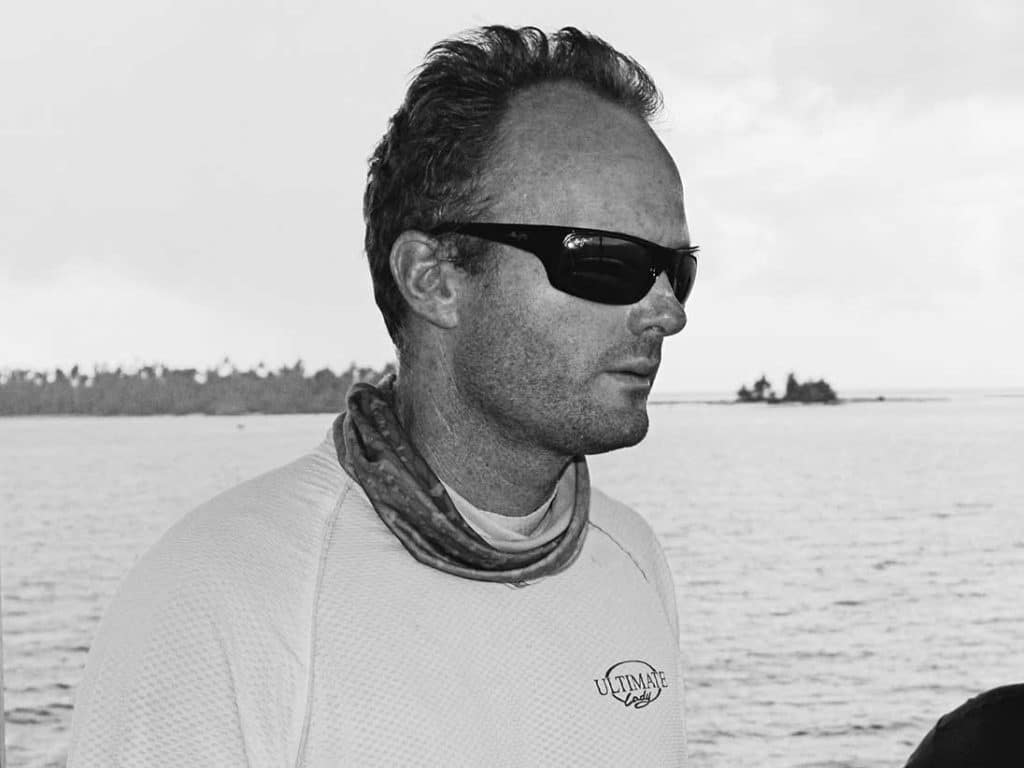
The Next Chapter
When Francis decided to build a proper gameboat for Polynesia, he wanted it to be able to range great distances while at the same time being as nimble as any sport-fisher. He was also mindful of the need to offer a charter boat that would price out competitively with the boats in other hotspots, which has not been easy to do in Tahiti. SeaWolf is a 49-foot custom concept boat he had built in New Zealand. Power is a single 520 hp MAN diesel i6 series engine, and the boat carries 1,000 gallons of fuel, offering a theoretical range of about 4,400 nautical miles at 7 knots. To put that in perspective, in theory, the boat could travel from Tahiti to San Diego, with fuel to spare.
SeaWolf also has a Hundested variable-pitch propeller that can be changed from forward to reverse at any rpm, up to 80 percent of the engine’s maximum of 1,800 rpm. It’s also equipped with the latest electronics, including but certainly not limited to a Quick MC2 gyrostabilizer, MAQ omnidirectional sonar and Simrad ES-80 sounder.
On one recent fishing trip near Fakarava Atoll, we had eight blue marlin bites and two yellowfin tuna in about 10 hours of fishing. SeaWolf has been on duty in Tahiti for only a few months and has yet to weigh a Big Mama, but Francis’ largest blue weighed on Ultimate Lady tipped the scales at 857 pounds. It won’t be long.
Read Next: We take a look at the largest IGFA marlin records.
Of all the remote areas he has fished on Ultimate Lady, Francis likes Nuku Hiva in the Marquesas group best for big marlin. He caught and released three estimated at 800 pounds or better in a two-day stretch up there. Down in the southern islands, he was making a beeline home from the Gambiers to Tahiti when he drove through a pile of fish at Raivavae. He caught one in the 700-pound range and another he called 500, then one about 400 pounds. Ironically, Robbie and Monty Brown and I scouted Raivavae in 2018, old-style. We caught one marlin from a local skiff, liked what we saw, and planned to return—which is how Francis and I got to talking. In the future, he plans to focus his attention primarily on developing Nuku Hiva and Raivavae as primary fishing destinations. But of course, he’s always up for an expedition to any other distant place in the South Pacific. Ultimate Lady can be employed as a gameboat in its own right, or as a mothership for SeaWolf.
In French Polynesia at least, the days of fishing on any kind of boat to just to go fishing now appear to be a thing of the past. It was all great fun, but when I realized that I was on Life No. 12 of my originally allotted nine, I started paying attention. SeaWolf provides plenty of adventure, but the air conditioning, superb food and first-class service sure are nicer than eating with your fingers from a deck hatch in a squall, just for starters. Tahiti never fails to provide the rest.
